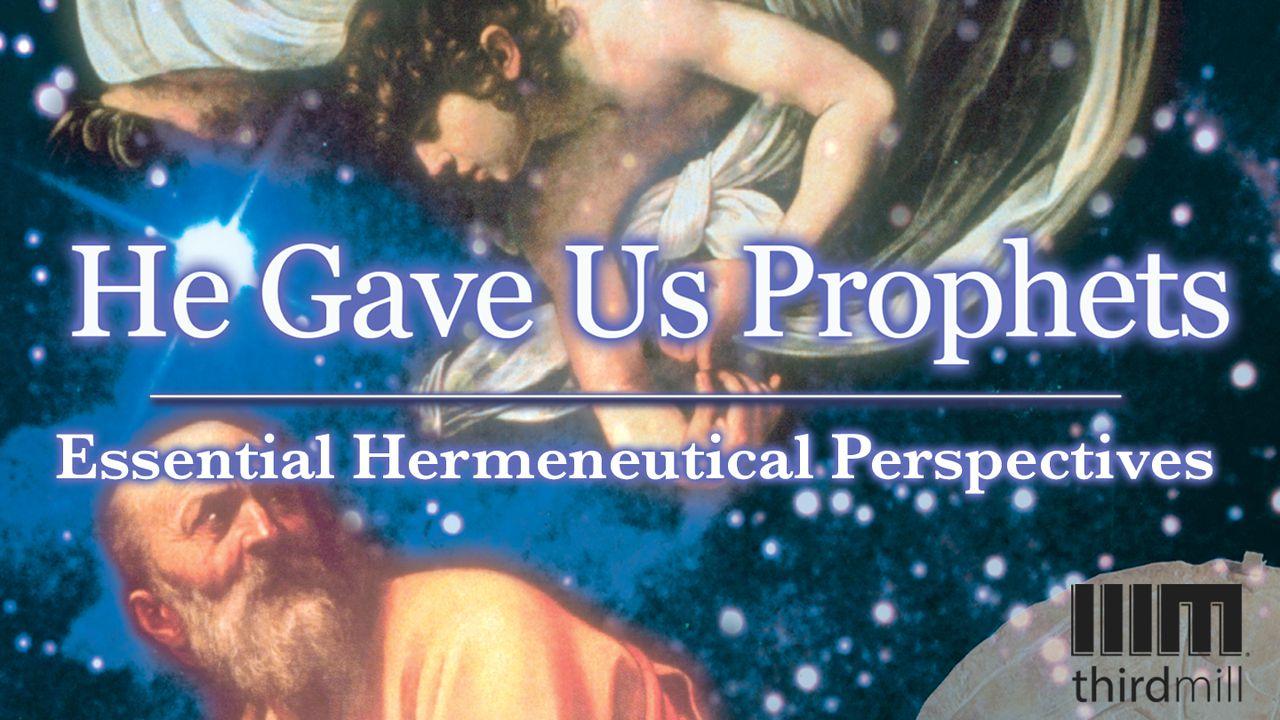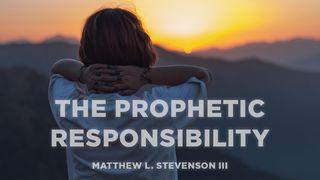Plan Info
He Gave Us Prophets: Essential Hermeneutical PerspectivesSample

Original Meaning of OT Prophecy: Isaiah 7:14
The only way to correct popular approaches to Old Testament prophecy is to develop a proper concern with the original meaning of these texts. In many respects, all we have to do is apply the basic principles of interpretation that we use in other parts of the Bible. The original meaning of prophecy is to be discovered through grammatico-historical exegesis. This is the only anchor that will keep us from pouring our own meanings into the prophets.
As the term “grammatico-historical” suggests, we must focus on two elements to discover the original meaning. First, we must look at the grammar of a prophecy, and we do this by focusing on the literary context. And second, we must concern ourselves with the historical context of the original writer and the original audience.
It is simply not enough for us to focus on a word or two here and there, as popular atomistic approaches do. We have to learn how to handle large sections of material, verses and chapters, sections of books, even whole books of prophecy. For example, we may be interested in the famous prophecy of Isaiah 7:14:
The virgin will be with child and will give birth to a son.
Christians are often satisfied simply to notice certain key words—“virgin” and “child,” and when they do, they feel very comfortable that they have understood what this passage means.
As much as we may feel comfortable with this approach to Isaiah 7:14, to be responsible with this passage, we must go beyond these few key words to consider the entire context. How does this verse fit within Isaiah 7? And how does it fit within this part of the book of Isaiah? And how does it contribute to the whole purpose and meaning of the book of Isaiah? It is only when we set this one verse within its larger context that we can be sure we have understood it correctly.
In addition to looking at the larger literary context of a prophecy, proper exegesis also includes reading prophecies within their historical context. We must think about the writer and the audience. When most Christians read prophecies they act as if these Scriptures float in timeless space. But grammatico-historical exegesis requires us to put these prophecies back on earth. We ask questions like these: Who wrote these words? When were they written? To whom was he writing? And why were these words written?
For example, when approaching Isaiah 7:14, we should not think of this as a mere batch of words floating in heaven simply waiting to touch ground when Jesus was born. We must bring this verse down to earth. We have to remember that we are reading a passage that describes Isaiah speaking to Ahaz, the King of Judah. And then we have to ask questions like these: Why did Isaiah say these words to Ahaz? What were their circumstances? What was the purpose? And it is only by considering this historical setting that we can ever hope to understand this passage correctly.
So we see that we have to reject popular approaches to Old Testament prophets which are atomistic and ahistorical, and instead we have to work hard to discover the original meaning through grammatico-historical exegesis. Once we understand the original meaning of a prophecy, then we have a secure anchor that will help us understand how to apply prophecy today.
Scripture
About this Plan

This plan explores the confusion about prophecy, a prophet's experience, original meaning and New Testament perspectives on Old Testament prophecy.
We would like to thank Third Millennium Ministries for providing this plan. For more information, please visit:
http://thirdmill.org
Related Plans

The Prophetic Responsibility

The Prophet - Every Believer Is Prophetic!

Run to Him!

Fathering Hearts

Filled: A Devotional to Fill Your Life With an Abundance of Hope, Peace, Joy & Love

Everybody’s Welcome: God Loves Everybody (Bible App for Kids)

Being With Jesus: Solitude and Silence Part 2

I Am REDEEMED!

Patience
